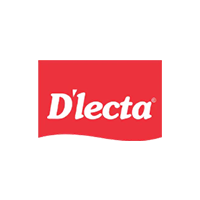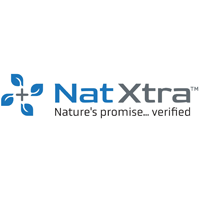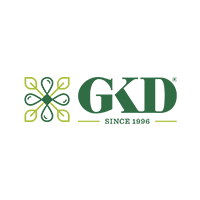Introduction to Direct-to-Consumer (DTC) Brands
In the evolving world of business and commerce, direct to consumer (D2C) brands are making a significant splash. These companies are bypassing traditional retail channels, connecting directly with consumers, and disrupting the status quo. The D2C model offers brands unprecedented control over their products, customer interactions, and marketing efforts, paving the way for a more personalized shopping experience.
Direct to consumer brands are breaking the mold, revolutionizing the way we buy products and services. This model removes intermediaries, allowing brands to sell directly to consumers, fostering deep relationships and cultivating brand loyalty. The rise of the internet and online shopping has further propelled this trend, making it a viable business model for brands of all sizes.
However, building a successful D2C brand involves more than just cutting out the middleman. It’s about creating a brand identity that resonates with consumers, and that’s where narrative building comes into play.
Understanding the DTC Definition and Distribution
So, what is a DTC brand? In the simplest terms, a DTC brand manufactures, markets, sells, and ships its products directly to consumers, bypassing the need for traditional retailers or other third-party intermediaries. This direct distribution allows brands to have complete control over the customer experience, from the moment a consumer first learns about the product to the moment it arrives at their doorstep.
The DTC distribution model is particularly suited to the digital age. With the rise of ecommerce platforms and social media, brands can now reach consumers directly in their homes, on their phones, and even in their inboxes. This opens up a world of opportunities for brands to build personal relationships with their customers, foster loyalty, and create a community around their products.
But it’s not just about selling products. To truly succeed in the DTC space, brands need to tell a story.
Importance of Narrative Building for DTC Brands
Narrative building is an essential tool for DTC brands. A compelling story can captivate consumers, foster emotional connections, and ultimately drive brand loyalty. It’s not just about what you sell, but why you sell it and the values you stand for. This is particularly important for DTC brands, as they have a direct line to their consumers.
A powerful narrative can help a brand stand out in a crowded market, inspire consumers, and create a sense of community. It can connect consumers to the brand’s mission, values, and purpose, fostering a deeper emotional connection and increasing brand loyalty. In the end, consumers are not just buying a product; they’re buying into a story.
Storytelling tactics are crucial in this process, enabling brands to craft narratives that resonate with consumers on an emotional level. The right story can turn a one-time customer into a brand advocate, amplifying the brand’s message and driving growth.
Impact of Storytelling Tactics on Consumer Brands
Storytelling tactics are essential for DTC brands, helping them craft compelling narratives that resonate with consumers. A brand’s story is not just about its products or services, but also about its values, mission, and vision. This narrative can create a sense of shared purpose, fostering a deeper connection between consumers and the brand.
Effective storytelling can also set a brand apart in a crowded market. It can help a brand establish a unique identity, communicate its value proposition, and create a memorable consumer experience. By telling a compelling story, brands can create a strong emotional connection with consumers, driving brand loyalty and advocacy.
In the DTC space, storytelling is particularly powerful. With a direct line to consumers, DTC brands have the unique opportunity to create meaningful, authentic connections, building a community of loyal customers who not only buy their products but also champion their brand.
How DTC Brands are Leveraging Digital Marketing
In the digital age, DTC brands are leveraging digital marketing to reach consumers directly, tell their story, and foster meaningful connections. From social media to email marketing, SEO to content marketing, DTC brands are using a variety of digital channels to engage consumers, build brand awareness, and drive sales.
Social media, in particular, has become a powerful tool for DTC brands. It allows brands to reach consumers directly, engage them in conversation, and build a community around their products. Brands can share their story, showcase their products, and engage with consumers in real-time, creating a more personal and authentic shopping experience.
Email marketing is another effective tool for DTC brands, allowing them to reach consumers directly in their inboxes. Brands can share their story, offer exclusive deals, and keep consumers updated on new products, fostering a deeper relationship and driving customer loyalty.
PR Strategies for DTC Brands
Public relations (PR) is another essential tool for DTC brands. It can help brands build credibility, increase visibility, and shape their narrative in the public eye. From securing media coverage to managing crises, PR strategies can play a crucial role in a brand’s success.
A successful PR strategy for a DTC brand might include securing media coverage in top-tier publications, leveraging influencer marketing to reach new audiences, or managing a crisis effectively to protect the brand’s reputation. The goal is to shape public perception of the brand, build credibility, and amplify the brand’s story.
But PR is not just about managing the brand’s image. It’s also about fostering meaningful connections with consumers, building a community around the brand, and driving brand loyalty. In the DTC space, PR can play a crucial role in building these connections and telling the brand’s story.
Case Studies of Successful Narrative Building by DTC Brands
There are many examples of DTC brands that have successfully leveraged narrative building to connect with consumers and drive growth. Brands like Warby Parker, Glossier, and Casper have each crafted compelling narratives that resonate with consumers, set them apart in the market, and drive brand loyalty.
Warby Parker, for example, has built a brand around the idea of providing affordable, stylish eyewear, while also making a positive impact. Their “Buy a Pair, Give a Pair” program, which donates a pair of glasses for every pair sold, is a key part of their brand narrative, resonating with consumers and fostering a deep sense of brand loyalty.
Similarly, Glossier has built a brand around the idea of democratizing beauty. Their narrative focuses on the idea that beauty should be personal, inclusive, and fun. This narrative, coupled with their direct engagement with consumers on social media, has helped them build a loyal community of fans.
Casper, on the other hand, has built a brand around the idea of revolutionizing sleep. Their narrative focuses on the importance of sleep and their commitment to creating the best possible sleep products. This narrative, coupled with their innovative products, has helped them stand out in a crowded market and build a loyal customer base.
Tools for Creating Compelling Stories for DTC Brands
There are many tools available to DTC brands to help them craft compelling stories. These might include content marketing tools like blogs and podcasts, social media platforms like Instagram and Twitter, and email marketing tools like Mailchimp and Constant Contact.
Content marketing tools can help brands create engaging, informative content that tells their story and connects with consumers. Blogs can provide a platform for sharing brand news, product information, and industry insights, while podcasts can offer a more personal, conversational approach.
Social media platforms can help brands engage with consumers in real-time, share their story, and build a community around their products. Instagram, for example, is a powerful tool for visual storytelling, allowing brands to showcase their products and share behind-the-scenes content.
Email marketing tools can help brands reach consumers directly in their inboxes, share their story, and foster a deeper relationship. Brands can use these tools to send out regular newsletters, share exclusive deals, and keep consumers updated on new products and brand news.
How to Create Impactful Connections Through Storytelling
Creating impactful connections through storytelling involves crafting a compelling narrative, using the right tools to share your story, and engaging with consumers in meaningful ways. It’s about more than just selling products; it’s about building a brand that resonates with consumers.
Start by defining your brand’s values, mission, and vision. What do you stand for? What is your purpose? How do you want to make a difference? This will form the foundation of your brand narrative.
Next, use the right tools to share your story. This might include content marketing, social media, email marketing, and PR. The goal is to reach consumers where they are, engage them in conversation, and build a community around your brand.
Finally, engage with consumers in meaningful ways. This might involve responding to comments on social media, sending personalized emails, or hosting events. The goal is to foster a deep connection with consumers, build brand loyalty, and create a community of brand advocates.
Conclusion and Future of DTC Brands in the Digital Landscape
The future of DTC brands in the digital landscape is bright. With the rise of ecommerce and digital marketing, brands have unprecedented opportunities to connect directly with consumers, tell their story, and build a loyal community.
But to truly succeed in this space, brands need to do more than just sell products. They need to build a brand that resonates with consumers, fosters deep connections, and inspires loyalty. This involves crafting a compelling narrative, leveraging the right tools to share their story, and engaging with consumers in meaningful ways.
So, how do you plan to build your D2C brand’s narrative? We exactly have the idea you’re looking for. We’re here to help you tell your story, connect with consumers, and build a brand that stands out in the digital landscape. Let’s create something amazing together.
































































